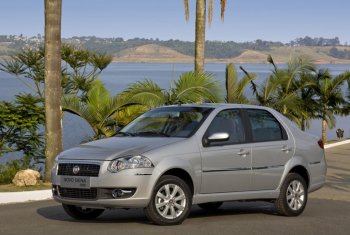 |
The Siena will restart production at Córdoba
in January as Fiat resumes car assembly at
the plant and puts in place a strategy to
built up in presence in the swiftly growing
Argentinean market. |
|
|
|
Christian
Rattazzi the most senior executive of Fiat in Argentina,
affirmed that the Siena’s production will start in
January 2008; that decision has delayed the project to
manufacture a 4x4 medium-sized pick-up in partnership
with the Indian automaker Tata.
At the begining
of this year, Fiat announced that will restart production of
vehicles in Argentina with a range of pick ups and 4x4
utility vehicles being assembled in partnership with the
Indian automaker Tata, a project which calls for a US$80
million investment. Then in May, the Italian firm once more
surprised Latin American market watchers by confirming that
its plant in Córdoba will start production of Siena, a
medium sized sedan whose manufacturing at the factory was
suspended during the financial crisis of Argentine. But the
order of priorities was swiftly changed, chronologically.
"If they told me
that Tata is delayed three months, I do not mind. Today, we
are totally focused on the Siena’s production," Christian
Rattazzi told Infobae Profesional. "The project with
Tata is scheduled for the end of next year and is still in
the design stage. By contrast, we are pushing on to
accomplished and restart the production of the Siena," said
the executive in the colloquium of IDEA that took place last
week in the city of Mar del Plata. Fiat will invest US$60
million to produce 50,000 units a year of Siena model, of
which 35,000 units will be exported, mainly to Brazil. "We
will start production in January increase the level in
February, but full capacity level will be achieved in
March," added the executive. The aim is to reach 100 units
daily during the third month of 2008.
Fiat opened its
plant in Córdoba in December 1996, after an investment of
US$600 million. In 1997, the unit produced 97,600 units
split between four models: Uno, Duna, Palio and Siena.
However, the Argentinean recession, which started in 1998,
forced the company to gradually slow its production, until
the plant stopped completely in the middle of 2002.
From a level of
95,000 units sold in 2002, the Argentinean domestic market
has grown up to an estimated 550,000 units up to the end of
this year; this will be a national record. This positive
scenery encouraged the majority of the automakers involved
in Latin America to decide to increase their levels of
investments in the country, with an aggregate level of
investment expected to be around US$3.5 billions by 2010,
according to the local association of automakers, Adefa (Asociación
de Fábricas de Automotores).
This policy,
coincidently, seems to be also based on the projections made
by sector analysts in the country, which estimate a total
level of production of between 620,000 and 640,000 vehicles
in 2008. The accessibility of credit to finance the purchase
of vehicles, has also helped to promote the growth in the
level of sales, and in terms of brands Fiat has the greatest
percentage of sales financed, with 51.1%, followed by
Renault and Chevrolet, with a 40.5 and 34.9%, respectively.
Against this
backdrop Fiat decided to transfer part of Siena’s production
from Brazil to Argentina, facing squarely up to the growing
regional demand. This year there will be nearly 3 million
cars sold in both countries. A regional focus was also an
important factor for the decision of Fiat to allocate the
manufacturing of its first pick-up developed in partnership
with Tata to Córdoba. The annual level of production for
this vehicle will be of 25,000 units, with 75% being
destined for export.
Source: Infobae
Profesional
|